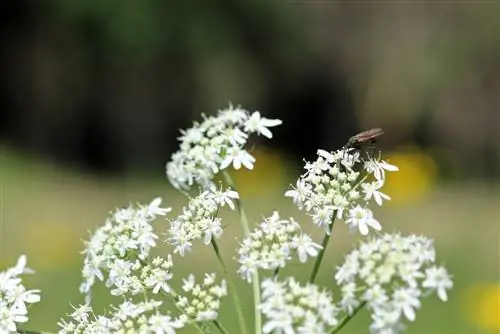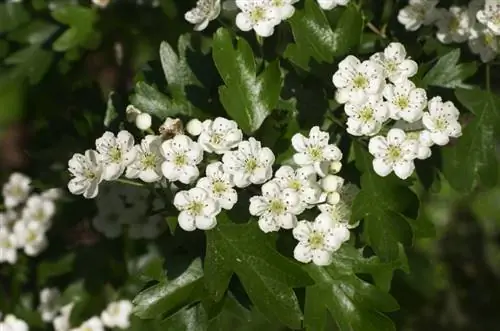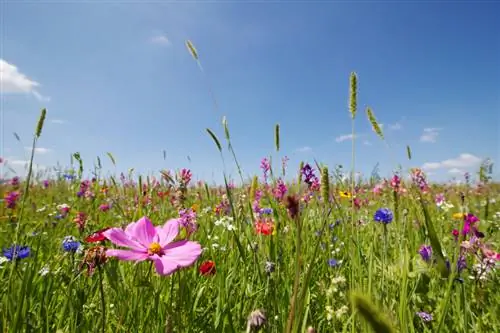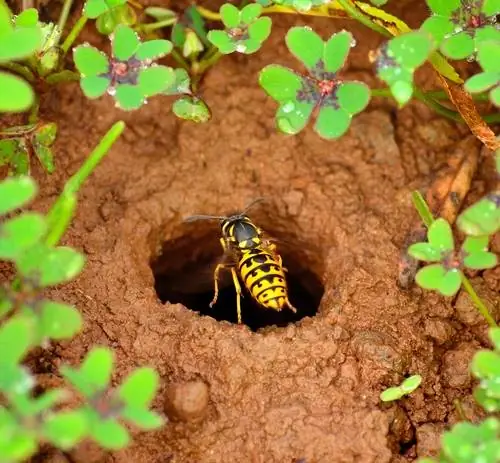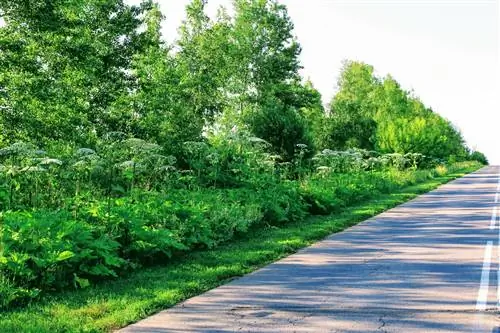- Author admin [email protected].
- Public 2023-12-16 16:46.
- Last modified 2025-06-01 06:02.
The increasing interest in natural garden design is drawing attention to native and immigrant wild perennials. This guide focuses on two types of hogweed. Here you can get to know two conspecifics better and they couldn't be more opposite.
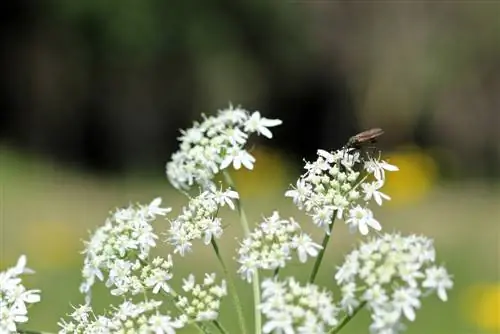
What types of hogweed are there?
There are two main types of hogweed: the harmless meadow hogweed (Heracleum sphondylium), which is native to Europe, and the poisonous giant hogweed (Heracleum mantegazzianum), which is invasive from the Caucasus and can cause skin burns.
Meadow hogweed - a natural beauty is introduced
Meadow hogweed is now a familiar sight again in nature reserves. After the excessive use of pesticides caused the native wild perennial to be forgotten, it is making its way back wherever toxic herbicides are avoided. The following profile summarizes the most important characteristics of natural beauty:
- Botanical name: Heracleum sphondylium
- Area of distribution: Europe, primarily in fat meadows, alluvial forests and herbaceous areas
- Growth height: 50 to 100 cm, rarely up to 150 cm
- Strong, hollow stems, angularly furrowed and hairy
- White to light pink disc flowers in double umbels from June to October
- Green, large leaves, mostly three pinnately cut
The young leaves are an important part of the Eastern European soup speci alty borscht. The traditional use as a wild vegetable is an important indication of the plant's safety. Only sensitive people can react with skin irritation to contact with the hairy stems.
Giant hogweed - ornamental and nasty at the same time
While meadow hogweed is enjoying increasing popularity, urgent warnings about a fellow species are circulating. Giant hogweed combines ornamental growth with toxic ingredients and aggressive spread. The following profile summarizes outstanding characteristics:
- Botanical name: Heracleum mantegazzianum
- Area of distribution: Caucasus, neophyte that migrated to Europe
- Growth height: 150 to 300 cm, rarely up to 400 cm
- Up to 10 cm thick, hollow, hairy stem with red spots
- White to whitish-green disc flowers with a diameter of 30 to 50 cm from June to July
- Large, green leaves, three, five or nine-part, up to 300 cm long
- Poisonous
The high toxic content of giant hogweed is based on various ingredients that, when combined with sunlight, can cause severe skin burns. A single specimen produces up to 80,000 seeds, which has led to invasive spread. Gardeners are therefore called upon to remove the plant as soon as possible.
Tip
Regardless of the German name True Hogweed, this plant is not one of the Hogweed species. Rather, it is a Mediterranean wild perennial that is assigned to the genus Acanthus under the botanical name acanthus mollis.

